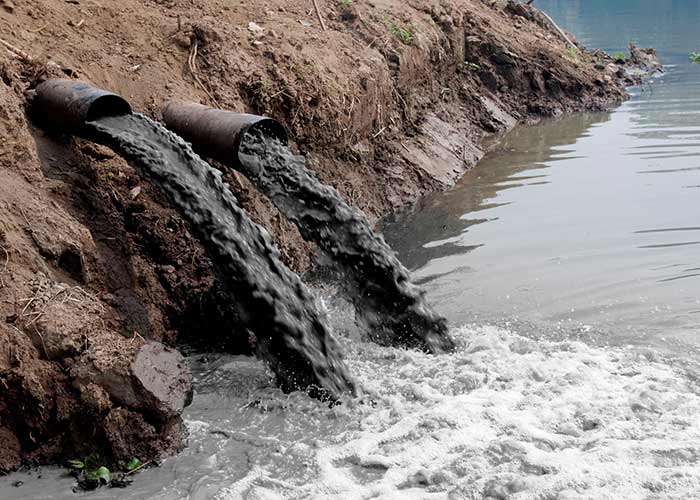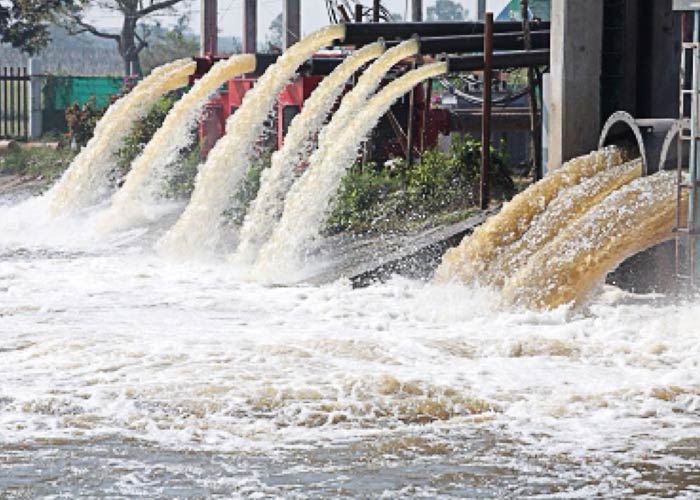Problem of Noise Pollution
Noise pollution has become a serious problem for human health. The noisy atmosphere in which we are living is an obstacle in securing good health. Noise pollution and environmental noise are hurting human and other organisms. Noise beyond a limit produces many diseases, such as hypertension, stress, making people vulnerable to forgetfulness, depression, insomnia, and many other serious ailments. Noise is also very dangerous for nature as a whole because it disturbs the tranquillity of all creatures and increases mortality rate in them.
What is Noise Pollution?
Noise pollution means an unwanted or undesirable sound that leads to physical and mental problems. Noise pollution is dependent on the loudness and frequency of the sound. In fact, when the sound exceeds its limit, it becomes fatal for human and other organisms. The noise intensity is measured in decibels or dB. A person can bear the noise up to 85 decibels, after which his hearing power can be damaged.
Normally, sounds more intense than 30 decibel are called noise. Anyway, all the sounds come under noise pollution which makes the mind turbulent or restless. In fact, any unwanted noise arising in the environment, which has adverse effects on the health of the organism, is noise pollution.
In daily life, we hear different intensity of sounds, whose level ranges from 10 to 100 decibels. Considering the side effects on human health, scientists have set the maximum sound limit, ranging from 75 to 85 dB in different countries. The World Health Organization considers the sound of 45 decibels ideal for cities. But measurement of sound in most big cities exceeds 90 decibels.
Sources/Causes of Noise Pollution
The sources of noise pollution are divided into two categories:
Natural sources
The natural environment is filled with various sounds – thunderstorms, lightning, tornado, cyclone, volcanic eruptions, earthquakes, landslides, sounds produced by animals, and rapidly falling water.
Human sources
Rapid industrialization, urbanization, use of modern means of transport, population growth, and increasing scale of human activities are some of the human factors responsible for noise pollution. Both types of noise pollution, affect sleep, listening ability, physical and mental health.
Vehicular Noise: The modern means of traffic including vehicles such as buses, trucks, scooters, cars, motorcycles, trains, aircraft, firecrackers, explosives etc, pollute the atmosphere. Sound of other automated vehicles and horn, excessive use of loudspeakers for religious purposes also generate jarring noise.
Industrial Noise: Industry-businesses, factories and commercial establishments produce a variety of raucous sounds that bump into our ears and disturb our mind. Noise pollution is an integral part of the industrial environment with heavy machines used in the industries; it is on the rise with the increase in industrial urbanization.
Commercialization of residential areas: Even in non-industrial areas, there is noise in the surrounding environment due to printing, dyeing machines, repairing cars, grinding etc.
Domestic Noise: As the houses in the cities are quite adjacent, the amount of domestic noise is increasing. The noise of radio, television, instrumentation and various types of sounds are constantly occurring around us, which cause mental health problems, stress, deafness etc. Other domestic sources include noise in the kitchen, and domestic discord including scolding, shouting, crying, etc.
Construction activities: Unbridled construction is also a reason for noise pollution outside the home. Sound pollution is also caused due to poor urban planning because industrial and residential buildings are quite close by in many cities.
Political Activities: Noise pollution is also generated by dharna, demonstrations, slogans, election propaganda, processions, and rallies frequently organized in cities.
Noisy Hospitals: Noise pollution also occurs in hospitals. Rocking of trolleys, wheelchairs, surgical instruments, oxygen cylinders, sounds from plants, uncontrolled conversations among patients, relatives, emergency noise and screams, mourning followed by death are some of the sources of noise pollution in medical centres.
Fireworks: Fireworks are another source of pollution. Uncontrolled fireworks in festivals, fairs, or crackers after victory in matches and elections produce unbearable noise.
Other Reasons: Noise pollution inside and outside the house includes car alarms, emergency services siren, machine tools, compressed air horn, equipment, electrical equipment, megaphone etc.
More on Causes of Noise Pollution…
Effects of Noise Pollution/Diseases Caused by Noise Pollution
- Noise pollution may cause temporary or permanent hearing impairment. The most direct harmful effect of excessive noise falls on the ears. Many times, extreme noise ruptures the ear drums.
- You cannot only be deaf but can also come in the grip of deadly illnesses like impotence and cancer, besides problems such as lack of memory, concentration, and interruption in speech, irritation, irritability, stress and depression.
- The noise not only creates irritability, anger, but also accelerates the heart rate by increasing blood flow in the arteries. The constant noise increases the amount of cholesterol in the blood, which contracts blood vessels, increasing the likelihood of cardiovascular disease.
- Health experts believe that rising noise gives rise to neurological disease, nervous breakdown, hypertension, vision, dizziness, excessive sweating, exhaustion
- As rapid noise hinders sleep, insomnia has adverse effects on human functioning. The person becomes irritable, angry, tired and tense, and he even becomes neurotic or crazy.
- Exposure to the noise of 180 decibels intensity may result in the death of man.
- Due to excessive noise, there is a decrease in the production of digestive juices.
- Noise pollution has a lot of adverse effect on infants and women, sometimes due to loud velocity of sound, women also undergo miscarriage or the foetus’s heart stops and the entire behaviour of the infant can change. Children imbibe forgetful tendencies.
- The effect of noise is dangerous for animal life too. Due to continuous noise, their habitat decreases and the threatened creatures reach the brink of extinction. The most notable of the deadly effects of noise pollution is that some species of whale die due to noise.
- Noise pollution has extremely harmful effects on other organisms and vegetation. Due to frequent noise, animals and birds leave their habitat and move away. Animals and birds migrate from the forest areas near the mining areas and high traffic roads. Due to acute sound waves, birds may even stop laying eggs.
- Because of excessive noise, many violent creatures cannot find their prey, while other creatures cannot survive being hunted.
- Many microbes are destroyed by acute sound, which inhibit decomposition of wastes.
- There are adverse effects of pollution on pets such as turbulence, and decrease in their milk content.
- Similarly, due to noise pollution, the growth of the vegetation is hindered; the fruits and flowers of the trees get withered and decayed.
- With excessive sound the walls of windows of the buildings are broken, the roofs rattle and get cracked.
- Due to blasts in the mining areas, or sound of jet aeroplanes sometimes high-rise buildings collapse or cracks develop in them, dams, bridges, etc.
- The sound effects of noise pollution caused by nuclear explosions spread through hundreds of kilometres so that biodiversity is threatened.
- Rocks, snowflakes and landslide incidents rise in snowy and mountainous areas.
- Because of the noise, many creatures also speak loudly, which is called Lombard Vocal Response. Their vocal intensity increases in the presence of noise. It occurs as a response to ambient noise.
- Due to excessive noise, there is a disruption in the studies of children too, as they do not get peaceful environment for study even in their homes.
More on Effects of Noise Pollution…
More on Diseases caused by Noise pollution…
Findings of a German Study on Noise Pollution
According to a recent study, traffic noise increases the risk of heart failure. Road, rail traffic noise, noise during air travel, have a profound effect on the person’s heart. Staying near the highway can prove to be harmful to your heart.
As part of this study, Andreas Seidler and his friends from Dresden University of Technology of Germany received and studied information from statutory health insurance companies for evaluation throughout Germany for several years.
In this case-control study of secondary data, these researchers found that those who lived in the Rhine-Main area, where the noise was very high, were much more likely to die due to heart attack.
When only such patients were studied in 2014 and 2015, who had died from heart attack, the researchers noticed deeper connection to the noise and heart attack. In this regard, Andreas Seidler and his colleagues believe that the effect of noise pollution is on most people’s ears and hearts. Even during air traffic, there should not be noise of more than 65 decibels; otherwise passengers may be in trouble.
There is also an indication from the people that traffic also has a profound effect on the health of the person. However, research has been done so far only about the noise and heart attack.
This study was conducted by NORAH (Noise-Related Annoyance, Cognition, and Health) which is spread through Europe.
Measures for Prevention/Control of Noise Pollution
- Considering the widespread ill-effects of noise pollution, measures need to be taken to control them.
- Increasing noise pollution is very harmful for the health, efficiency and productivity of animals, organisms, flora etc. as well as the adaptation and balance of the environment.
- It has become necessary to control it and also to make people aware of this.
- Factories, which mainly produce noise pollution, should be established far away from settlements, forests, reservoirs and hilly areas.
- Settlements should not be located at least within 20 kilometres from mining areas, and airports.
- Explosives should be not used in mountainous, forest and mining areas.
- With proper maintenance of vehicles, along with the restriction of high sound horns, the use of advanced technology silencer should be used inevitably.
- Use of horn in public places (hospital, teaching institutes etc.) should be banned.
- The sound of musical instruments should be controlled to desirable limits.
- The use of sound amplifiers of high power, DJ, etc should be banned in religious, social, political events.
- There should be control over noise generated from machine and equipment.
- The use of sound absorber acoustic tiles should be encouraged in the construction of multi-storeyed buildings.
- In industrial, commercial and hospital buildings, adequate soundproof systems should be installed.
- Intensive plantation should be made in the entire building complex.
- Planting green trees along the road side reduces the intensity of noise pollution.
- Dense tree cover is very useful in the prevention of noise pollution. Such trees help in absorbing high sound waves, as well as deflecting them into the atmosphere.
- Therefore, cities, highways, industrial settlements should be fully lined with the green belt of trees.
- Protective tools (ear plugs etc.) should be provided for workers.
- Limits should be set on noise and control over noise pollution by legal provisions.
- Adequate health education on pollution should be provided through government agencies and voluntary institutions.
More on How to Control Noise pollution…
Noise Pollution in India
According to a recent report of Central Pollution Control Board, the level of noise in Mumbai is highest in the country. Delhi is on the fourth number. However, Lucknow is at the second place with Hyderabad placed at the third slot in terms of noise pollution.
In its report, CPCB has said that Mumbai had the highest level of noise pollution during 2011-14. According to the report, due to greenery and number of roadside trees, noise pollution has been somewhat restrained in Delhi. But in the World Hearings Index, Delhi has become the world’s fifth largest noisiest city. In Delhi, ITO and Anand Vihar are the places which have recorded the worst noise. According to the recent statistics of the Delhi Pollution Control Committee, noise was recorded up to 74 decibels between 12 to 2 pm at ITO, whereas in the afternoon, Anand Vihar area recorded the level of noise pollution at 60.4 decibels at noon and 41 decibels in the night.
Apart from the number of vehicles, noise pollution in the country can be attributed to the rising number of to vehicles, train, aircraft, generator sets, office machines, and construction activities.
In India, the noise of more than 75 decibels (up to one meter distance from the source of the sound) is illegal from 10 am to 6 am. Those convicted in violation of these rules, under Section 290 and 291 of the Indian Penal Code, can face a fine of one lakh rupees or a prison or up to five years, sentence may run simultaneously, under the Environment Protection Act 1986.
In this connection, the Division bench of the then Chief Justice RC Lahoti and Justice Ashok Bhan on 18th July, 2005 had issued directions under Section 141, 142 of the Constitution, regarding restrictions on vehicles, loud speakers and crackers etc. in residential areas from 10 am to 6 am, but till date there has been no effective implementation of the law.
Conclusion
Pollution is due to excessive sound is dangerous both for mental and physical health; it poses a threat for living organisms to exist on Earth. While the government and the courts of various countries are taking several measures to reduce the intensity of noise pollution, it calls for collective efforts and resolve on the part of mankind. If people themselves promote sound pollution, they will not be in a position to motivate others to use minimal sound. Let us fulfil our duties towards the Planet Earth by contributing towards environmental protection.
Moreover, there is a need for greater awareness on this issue as only 5 to 10 percent of the people affected by noise formally file a complaint. Many people are not aware of the information about their legal rights under the environmental laws in force in various countries. Clearly, there is a need to change things at the ground level to tackle the global menace of noise pollution.
More in Noise Pollution
Diseases caused by Noise pollution






